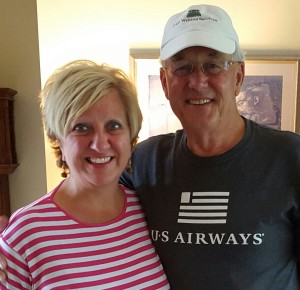The Captain’s Corner
One of the greatest joys of working for the airlines—and there are many—is the relationship with the passionate professionals with whom one flies. Among the most personal of these is the pilot–copilot relationship.
The pilot, also known as the “Pilot in Command” (“P.I.C.”), is by law and tradition fully in charge for the conduct and safety of the flight. Therefore, he or she may take any action—emergency or otherwise—to accomplish this. The copilot, also known as the “Second in Command” (“S.I.C.”), is to assist the pilot. He or she is fully qualified to fly the airplane and to take over the controls if the pilot is impaired or incapacitated. One is not greater than the other, but when each fulfills his or her professional role, the result is not only teamwork, but a successful flight!
A now well-known and outstanding example of good pilot–copilot teamwork was demonstrated by the crew of the recent “Miracle on the Hudson.” This was the successful water landing on the Hudson River—without fatalities—by an airplane with no functioning engines. The pilot and copilot worked together in intense cooperation. They communicated fully and efficiently, enabling them to make critical decisions. This example confirms the principle that is taught in Ecclesiastes 4:9–10, declaring that “two are better than one.”
In many ways, the pilot–copilot relationship resembles that of the husband and wife, as set forth in Ephesians 5:22–33. Good pilots set the tone of the cockpit relationship. They accept and encourage help from their copilots, especially concerns and conflicts that can be resolved through good communication. Additionally, they value their copilots. Good husbands, as author Beneth Jones explained, “Know their wives, love their wives, and value their wives.”
A good copilot is free to point out problems. In fact, he or she may be more qualified or have more experience than the pilot in working with that airplane. Good pilots use this knowledge and experience to achieve the common goal of a successful flight, sometimes asking, “Do you know of a better way?” A husband should feel confident to ask the same question of his wife, recognizing that she may have greater insights and stronger abilities in certain areas. He should appreciate and value his wife’s contribution to the team. Just as the copilot in the cockpit, a good wife is a knowledgeable and integral part of the team and works alongside her husband—not ahead of him or behind him.
God’s pattern in the Scriptures for marriage—and life—works! When each member of the team/family recognizes his or her role and values the other members of the team/family, it’s sure to be a successful journey!
____________________________
Joe Henderson, Brenda’s husband, is a retired international airline captain and now blogs in “The Captain’s Corner” on a regular basis.
Would you like to receive these posts in your Inbox? We won’t spam you! You will only receive e-mails from us when a new post appears on the blog. Click here to subscribe.

